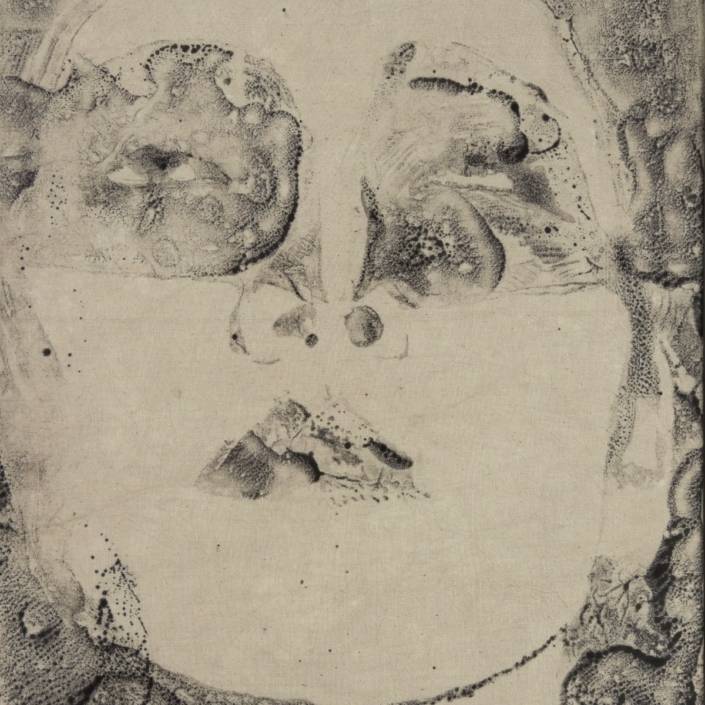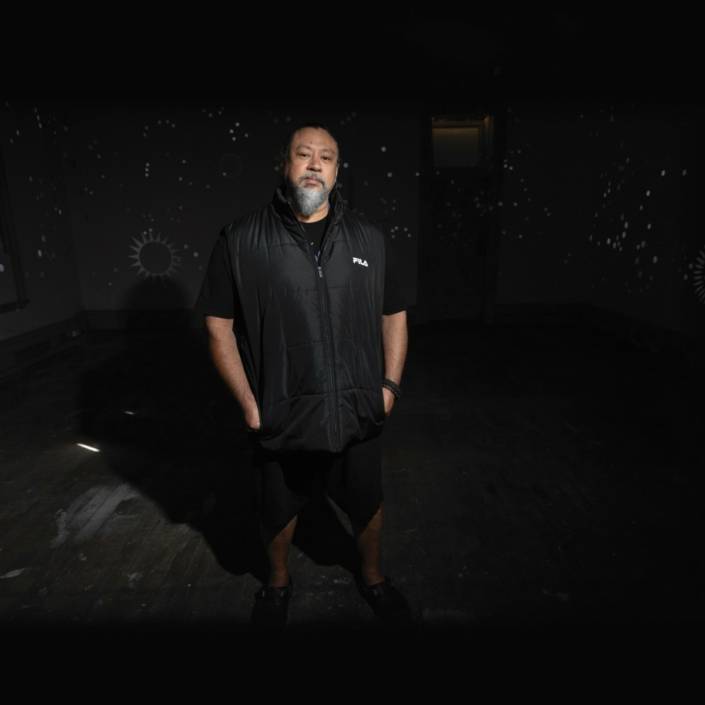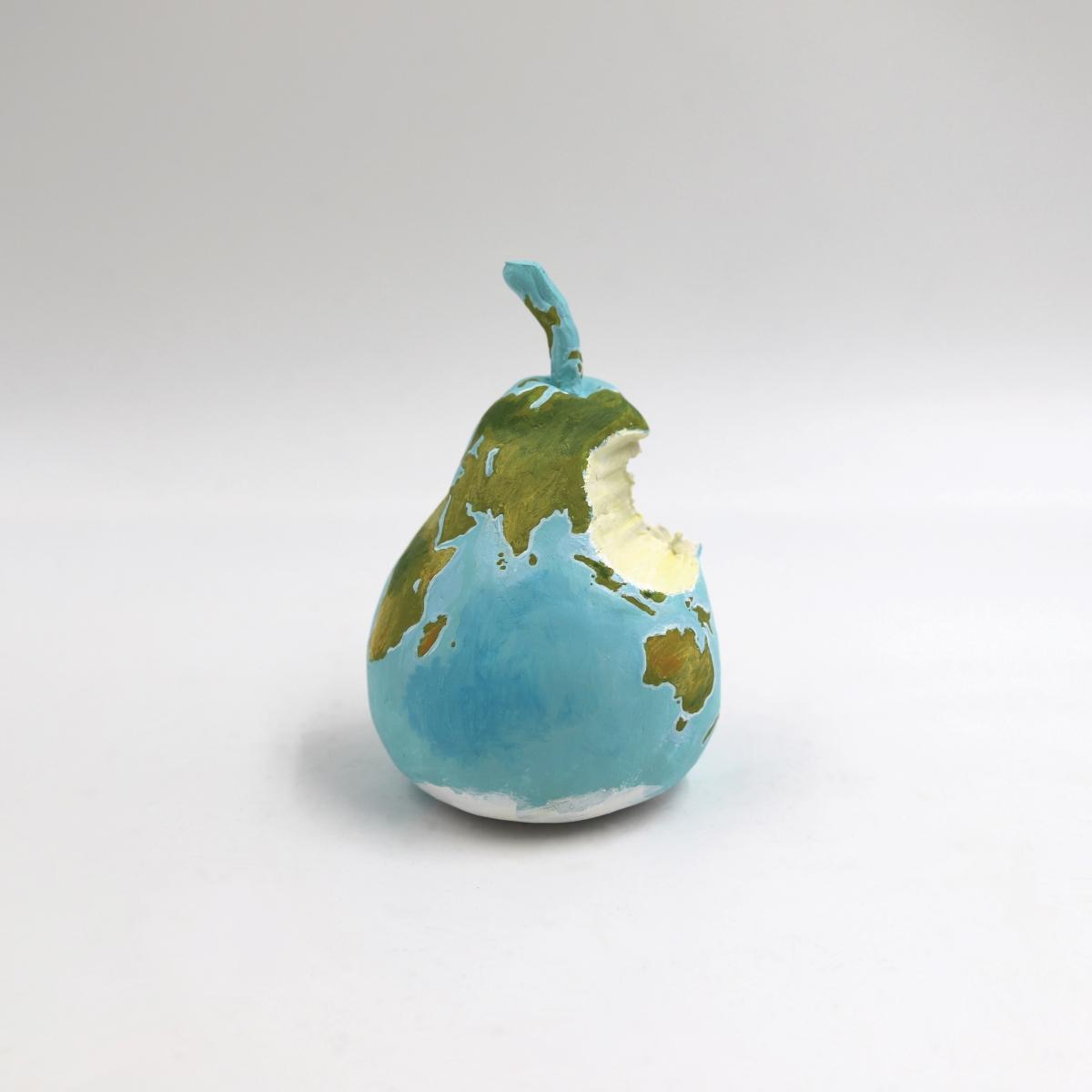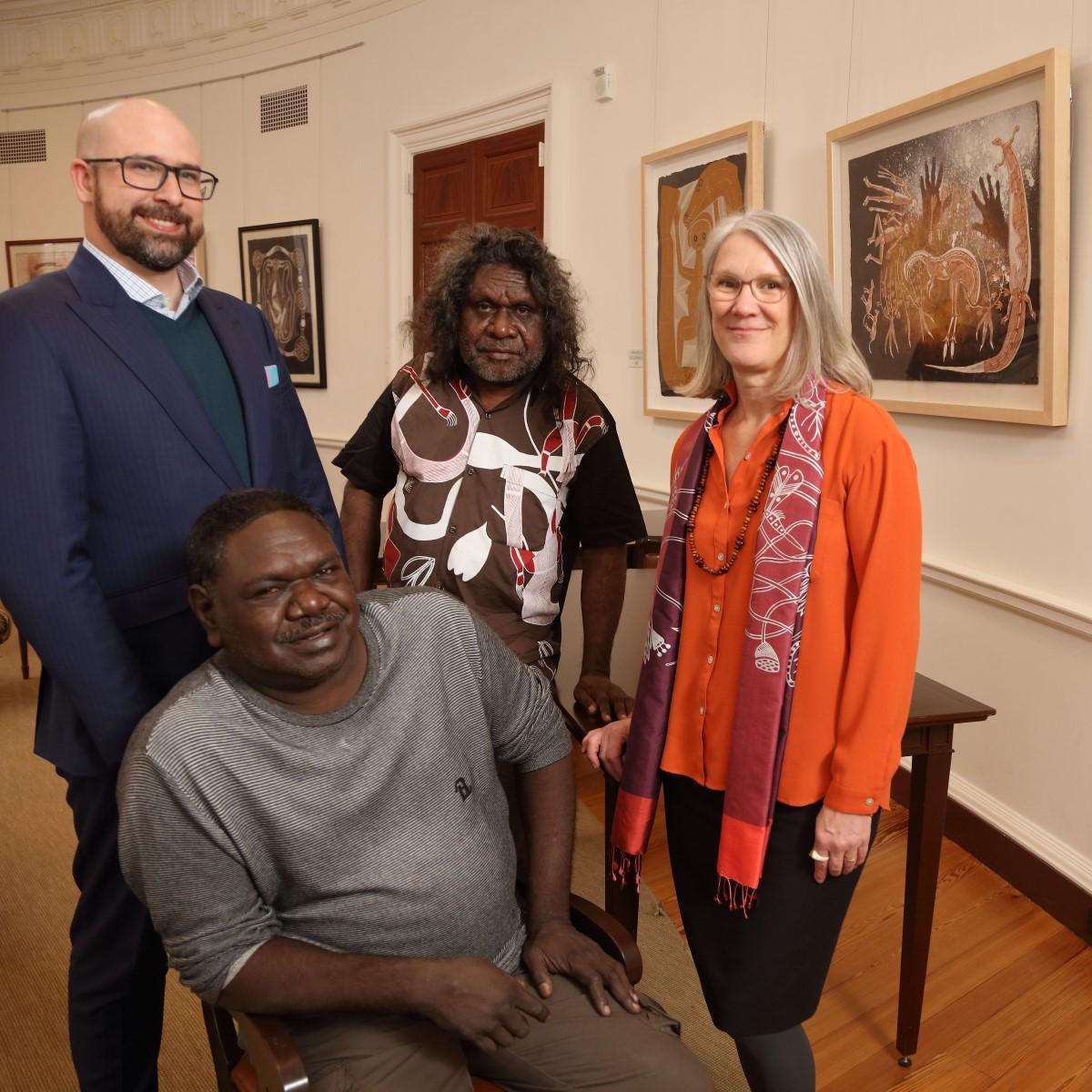New Directions: Russ Flatt
Artists who have recently taken their practice somewhere different.
Words: Lucinda Bennett
In May of 2022, the exhibition Te Ahua, Te Wa, Te Atea by Ngāti Kahungunu artist Russ Flatt opened at MTG Hawkes Bay. Best known for his cinematic, carefully staged photographs examining political themes, this commission saw Flatt investigating land sales in Heretaunga (a region within the Hawkes Bay), reading historic documents and receiving oral histories from those whose ancestors had experienced the destruction or confiscation of their wāhi tapu (sacred place) through colonisation, urbanisation and industrialisation.
With the aim of capturing the feeling of being on the whenua (land) and learning some of its history, Flatt chose to work with 3D mapping technologies to create his first video installation. The resultant work offers a birds-eye view of five local wāhi tapu – all sites that are extremely sacred to iwi, which were brutally confiscated by Pākehā settlers in 1870. Flatt explains, “The project used a mixture of drone, photogrammetry, 3D LiDAR scanning and Linz Mapping point clouds. This was then merged to give the sense of an in-between space that is travelling through the past, present and future. These tools gave me the freedom to explore mauri (life force) and wairua (spirit) while exploring these sacred sites. The point cloud, in its rawest form, gives you the sense potentially of what the whenua (land) might have been before colonisation. I was excited to work with technology that is not used for this specific purpose and to test its boundaries through storytelling.”
Following Te Ahua, Te Wa, Te Atea, Flatt continued to work with these technologies, developing Tekau Mā Rua, a continuation of the project that was shown at Tim Melville Gallery, Auckland in October. While the images and videos in this series are also derived from the 3D scans and point-mapping, many of the sites depicted are populated by ghostly female figures, gazing solemnly upon the wāhi tapu. “I see [these works] as a form of decolonisation,” says Flatt. “In Europeans’ eyes, wāhine [women] were less than the men. This was not the case within whānau, hapū and iwi. I have made a conscious decision to bring forth wāhine on to the whenua of the Heretaunga, to stand in an act of defiance against these archaic Pākehā hetero-normative chauvinistic narratives. As Papatūānuku holds our wāhine within these images, they collectively speak to the histories past and a new way to envision a path forward into decolonising Aotearoa and recovering from past trauma.”
Featured image: Artist Russ Flatt. Photo: Sam Hartnett.
This article was originally published in Art Collector issue 103, January-March 2023.











